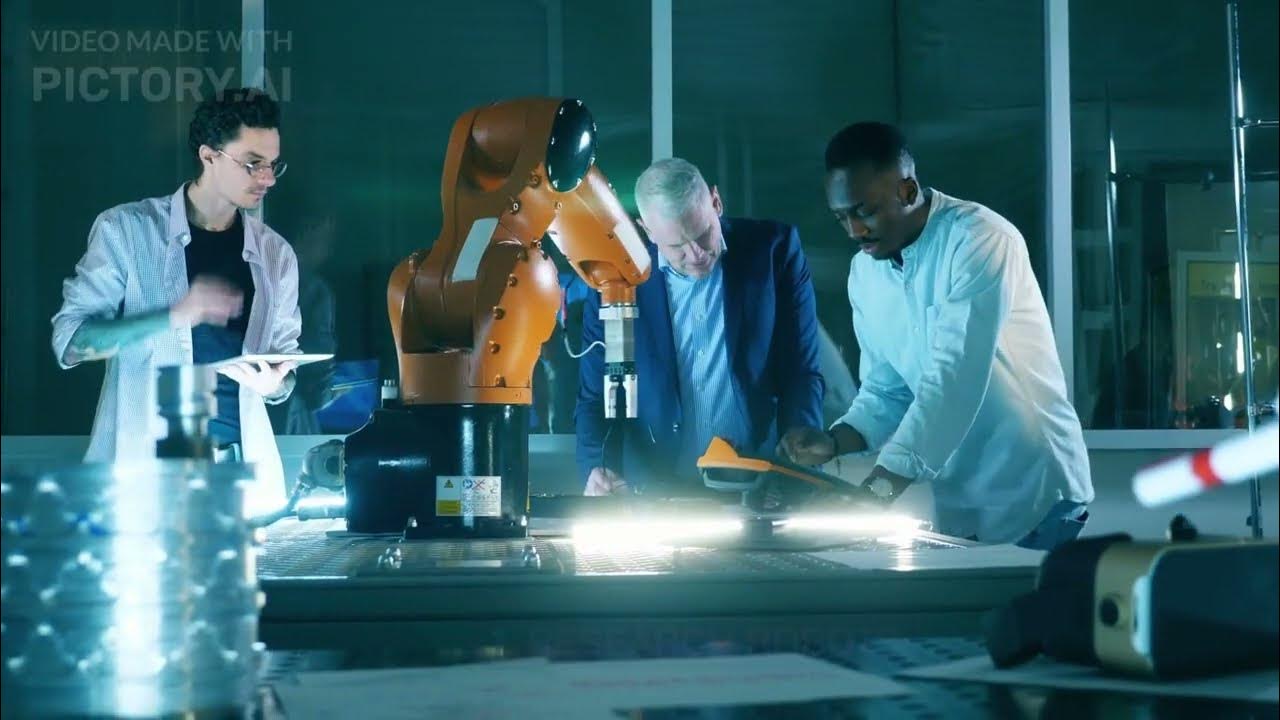Introduction to robotics
Summary
TLDRIn the inaugural lecture of 'Introduction to Robotics', Peter Corke introduces the diverse world of robotics, focusing on manufacturing robots used in factories for tasks like car and computer assembly. He outlines the course's intent to explore various types of robots, including those that drive, fly, and navigate both underwater and on water surfaces, before delving deeper into the study of arm-type robots throughout the six-week course.
Takeaways
- 👨🏫 The course is led by Peter Corke, who will be the lecturer for the next six weeks.
- 🤖 The course will cover a variety of robots, starting with an overview of different types.
- 🏭 A significant focus will be on manufacturing robots, which are essential in industries like car and computer manufacturing.
- 🚗 Manufacturing robots are the type that will be studied most closely throughout the course.
- 🌟 The first lecture aims to provide a broad perspective on the range of robots in the world today.
- 🚗🛫🚤 The course will explore various types of robots including those that drive, fly, swim underwater, and paddle on water surfaces.
- 🔍 The lecture will help students orient themselves within the vast field of robotics.
- 📚 For the rest of the course, there will be an in-depth study of arm-type robots.
- 📈 The course is designed to give students a foundational understanding of the principles and applications of robotics.
- 🌐 The content is relevant to the current landscape of robotics, touching on the most common and impactful types of robots.
Q & A
What is the name of the lecturer for the 'Introduction to Robotics' course?
-The lecturer's name is Peter Corke.
How long will the course last?
-The course will last for six weeks.
What is the focus of the first lecture in the 'Introduction to Robotics' course?
-The first lecture is intended to provide an overview of the different types of robots in the world today.
What type of robots are discussed in the first lecture?
-The lecture discusses various types of robots including those that drive, fly, swim underwater, and paddle on the surface of the water.
What is the primary type of robot that will be studied in the 'Introduction to Robotics' course?
-The primary focus of the course is on manufacturing robots, specifically arm type robots used in factories for tasks like building cars and computers.
What is the purpose of the 'Introduction to Robotics' course?
-The purpose of the course is to explore the variety of robots that exist today and to study them in depth, with a particular focus on manufacturing robots.
What does Peter Corke refer to as the 'fictional underpinnings' of robotics?
-The term 'fictional underpinnings' is not explicitly defined in the script, but it may refer to the foundational concepts or theories that are often inspired by or compared to science fiction in the field of robotics.
Why are manufacturing robots considered an important class of robots?
-Manufacturing robots are important because they perform critical tasks in factories, contributing significantly to the production of various goods such as cars and computers.
What does the term 'arm type robots' refer to in the context of the script?
-In the context of the script, 'arm type robots' refers to the robotic arms used in manufacturing settings for assembling and manipulating objects.
What is the structure of the 'Introduction to Robotics' course according to the script?
-The course begins with an introductory lecture on the variety of robots, followed by a more focused study on arm type robots for the remainder of the course.
What can students expect to learn about in the subsequent lectures after the first one?
-After the first lecture, students can expect to delve deeper into the study of arm type robots, likely covering their design, functionality, and applications in manufacturing.
Outlines

Dieser Bereich ist nur für Premium-Benutzer verfügbar. Bitte führen Sie ein Upgrade durch, um auf diesen Abschnitt zuzugreifen.
Upgrade durchführenMindmap

Dieser Bereich ist nur für Premium-Benutzer verfügbar. Bitte führen Sie ein Upgrade durch, um auf diesen Abschnitt zuzugreifen.
Upgrade durchführenKeywords

Dieser Bereich ist nur für Premium-Benutzer verfügbar. Bitte führen Sie ein Upgrade durch, um auf diesen Abschnitt zuzugreifen.
Upgrade durchführenHighlights

Dieser Bereich ist nur für Premium-Benutzer verfügbar. Bitte führen Sie ein Upgrade durch, um auf diesen Abschnitt zuzugreifen.
Upgrade durchführenTranscripts

Dieser Bereich ist nur für Premium-Benutzer verfügbar. Bitte führen Sie ein Upgrade durch, um auf diesen Abschnitt zuzugreifen.
Upgrade durchführenWeitere ähnliche Videos ansehen
5.0 / 5 (0 votes)






